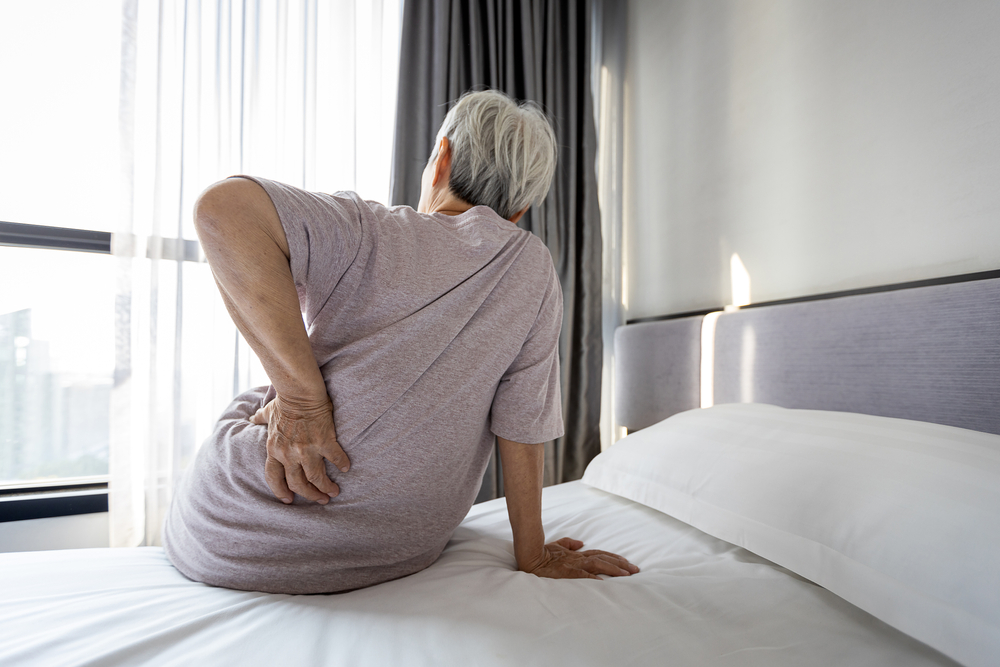Why Would an Elderly Person Start Leaning to One Side?
Category:

As you spend time with your elderly loved ones – especially if you are their primary caregiver – you will likely become hyper aware of every change in their bodies. One of the things you may begin to notice as you observe your loved ones is that the elderly may begin leaning to one side when sitting. This article will discuss some of the reasons an elderly person may begin leaning to one side and ways to help.
Why Would an Elderly Person Start Leaning to One Side?
Elderly adults often suffer from a range of conditions affecting their posture. Let’s explore some of the primary causes:
Neurological disorders.
Neurological issues play a significant role in posture changes.
- Alzheimer’s and Dementia: These conditions, while primarily affecting memory and cognitive function, also impact parts of the brain responsible for balance and muscle coordination. As these areas deteriorate, seniors may unconsciously lean to one side for perceived stability.
- Parkinson’s Disease: A disorder that disrupts dopamine levels in the brain, Parkinson’s directly impacts balance and movement. Seniors with this condition often experience muscle stiffness, predominantly on one side, leading to a noticeable lean. Their challenge in controlling posture, coupled with muscle rigidity, can further exacerbate this leaning tendency.
Muscle and Joint Weakness.
Aging inherently brings about changes in our musculature and joints.
- Muscle Tone: Over time, muscle tone and core strength can decrease, making tasks like sitting up straight more challenging. This reduced strength can lead to a dependency on leaning to one side for support.
- Pain and Stiffness: Age-related conditions like arthritis can cause significant discomfort in joints and muscles. To alleviate this pain, seniors might adjust their sitting position frequently, leading to a persistent lean or slouch.
Skeletal Disorders.
The skeletal system can also undergo changes with age.
- Scoliosis: This condition results in a lateral curvature of the spine. As the spine deviates from its typical alignment, it can cause a visible lean, especially if one shoulder blade becomes more pronounced than the other.
- Osteoporosis: A condition characterized by brittle and fragile bones, osteoporosis can lead to a gradual hunching of the back. Pain from weakened bones can further cause seniors to adopt a leaning posture to minimize discomfort.
Chronic Pain and Nerve Pain.
Persistent pain can significantly influence posture.
- Chronic Pain: Conditions like fibromyalgia or long-term injuries can result in constant pain, making seniors adjust their posture frequently in search of a comfortable position, leading to a consistent lean.
- Nerve Pain: Issues like sciatica, where a nerve is pinched or irritated, can cause sharp, shooting pains. To avoid this pain, seniors might lean away from the affected side, leading to an uneven posture.
Download Our FREE Joint Pain Remedy Guide
How to Help Elderly Leaning to One Side
There are several ways you can help your elderly loved one to prevent them from leaning and sit in a healthy, safe posture. Consider some of these options:
- Select the Right Chair. Be sure your loved one is sitting in a chair that is not too large or too small. Assure that support cushions are in the correct place and not too soft or too stiff. You should help your loved one until they feel like Goldilocks when she finds the chair that is just right. Also, check the environment around the chair. Is your loved one leaning forward because they can’t see or hear the television across the room? Are they leaning towards the sunlight coming in an open window? These factors are easily addressed and can help prevent leaning.
- Encourage Light Exercise. Careful movement and stretching for just a few minutes each day will help your loved one move around more comfortably and maintain the muscles needed for posture.
- Medical Intervention. In some cases, medical interventions like physical therapy can be beneficial. Physical therapists can provide exercises to strengthen muscles and improve posture. Chiropractic care can also address skeletal misalignments.
- Introduce Mobility Aids. Mobility aides like canes, walkers, and wheelchairs reduce the stress on weak muscles and bones. Just be sure leaning over a walker or cane is not increasing the lean when your loved one moves around. Support structures around the home – like grab bars in the bathroom – will also help keep your elderly loved one upright.
Subscribe
Date: 2023-10-26
Category:


